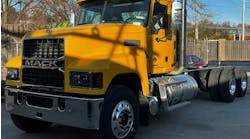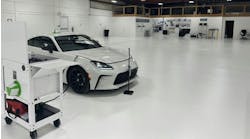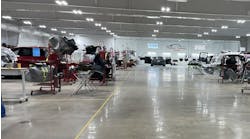Culture Shock II
Many readers wrote to comment on my February editorial about gas prices here and in Europe. Most pointed out that gas in Europe is expensive because it's heavily taxed, and they disagreed with my statement that 'our gas prices don't come close to covering the real cost of motorized transportation.' Obviously, I have some explaining to do.
When a government calculates the true cost of something, costs are either internal or external. A power plant charges enough for electricity to cover expenses and make a profit. Those are internal costs of electricity, paid by those who use it. The pollution generated by the plant imposes measurable cleanup and healthcare costs on the community. Those are external costs paid by the community, not just the user. Because the whole community benefits from the electricity, it's reasonable to use public money to cover some of those external costs.
For motor vehicles, fuel is an internal cost to the driver. External costs include highway construction and maintenance, police and rescue services, the environmental impact of roads and vehicles, and others. Because the whole community benefits from roads and vehicles, it's reasonable to expect the community to pay a share of the external costs. The difference between the United States and Europe is the size of that publicly funded share.
Don't get me wrong.I'm a car guy just like you. I'll be the last to give up my mobile lifestyle and the pleasure of
driving fun cars.
The Brookings Institution is a non-partisan research institute focused on public policies. In their analysis of last year's U.S. highway spending, it found that federal and state gasoline taxes paid for 35 percent of our highway construction and maintenance. Another 24 percent came from vehicle taxes and tolls. The remaining half of our highway spending came from property taxes, bonds and federal and local governments' general funds -- all public money. No other external costs are mentioned in that report, just highway construction and maintenance.
A study of European highway funding published by the Federation of Transport and Environment in the Netherlands reported that gasoline taxes cover 58 percent of motor vehicle transportation costs in all of Europe, including a list of external costs that we don't count as highway spending. European governments admit using high gas taxes to dissuade people from using gasoline, and they admit spending some of that money on non-highway projects. But some of it also funds the conservation and alternate fuel programs I mentioned in February.
People in Europe dislike their high gas taxes so much, they protested in the streets a few years ago. But they have learned how to conserve fuel without sacrificing mobility. Outside of pressuring the auto industry with CAFE standards, our own government has done little to prompt fuel conservation. I'm not making a value judgment; I'm just pointing out the cultural difference. We simply don't think as much about saving gas because it's cheap and plentiful.
Don't get me wrong. I'm a car guy just like you. I'll be the last to give up my mobile lifestyle and the pleasure of driving fun cars. And I agree with the reader who pointed out that our lifestyle, economy and arguably even our national security rely on the mobility provided by our cars. However, I've experienced a culture that values mobility just as much as we do, but that also forces its drivers to pay more of the true costs. I can only imagine the initial panic, and then the amazing resourcefulness, that would sweep this country if we suddenly had to do the same.



